37 heavyweight bass production tips: recording, programming, arranging, mixing and more
More than three dozen priceless nuggets of bass production wisdom
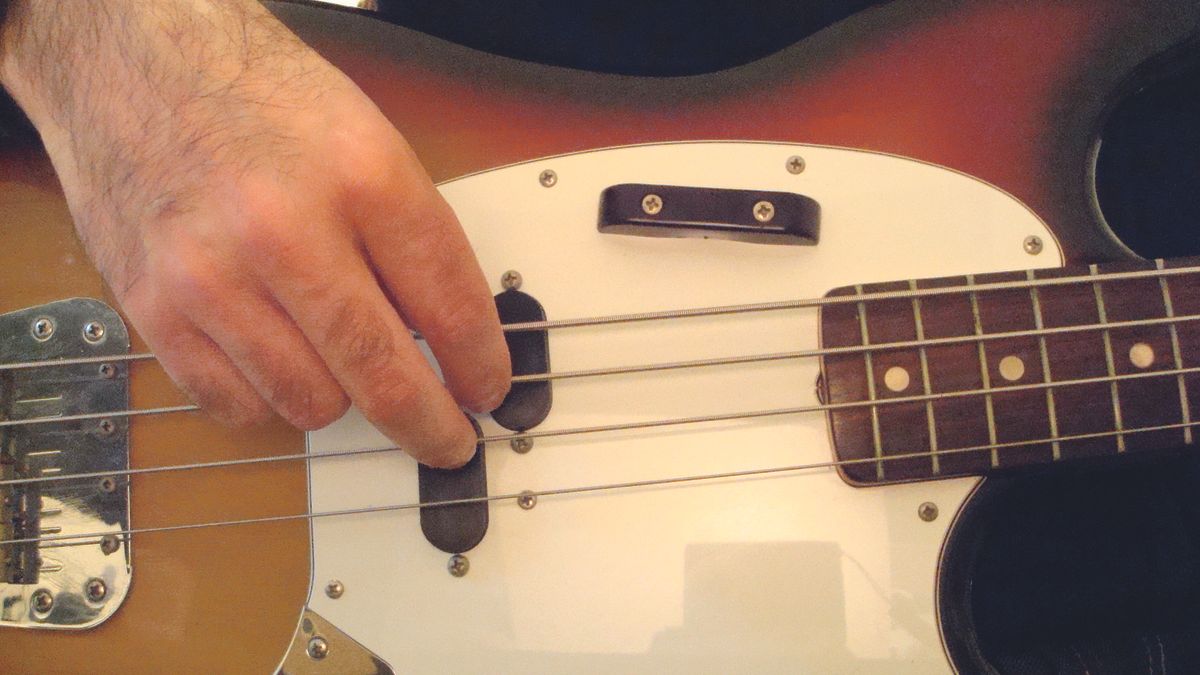
These days, producers and artists have access to music-making tools of such high quality and versatility that creating a decent-sounding bassline might seem like the easiest thing in the world.
But the problem, of course, is that everyone has access to these tools. As you marvel at how simple it is to fire up a bass preset on a synth, program a one-note pattern and loop it across your track, bear in mind that all of your contemporaries will have the option to take this path of least resistance, too - which means the ones who’ll stand out are those who work a bit harder.
To put it another way, we’d argue that you should give your bass parts the attention they deserve, as otherwise they run the risk of sounding at best generic, and at worst pretty lousy.
Hence we present the following 37 tips: these bite-sized chunks of advice are designed to make you think again about the way you approach composing, recording, programming, arranging and mixing your basslines. With any luck, they’ll help you to do at least some of these things better.
There’s no magic formula here - hitting the low-end sweet spot can be as much about trial and error as it is about flashes of inspiration - but what we can say is that a great bassline is the sum of many parts. You might have come up with a floor-shaking sound, but what good is that if you haven’t programmed a decent groove? Alternatively, your ear for a catchy bassline might be well trained, but if you can’t make yours sit properly in the mix, its earworm properties will be lost.
Winning the bass race, then, isn’t going to be easy – but with as your personal trainer, you’re off to a flying start.
Designing bass sounds
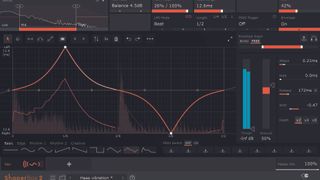
1. Think different
If you’re struggling to get the kind of bass sound that you’re looking for, why not think out of the box and try something completely different? It’s not unheard of for producers to use pitched-down woodwind instruments to create basslines – try a bass clarinet, for example. You might need to apply a bit of processing, but this can create a nice, buzzy bass tone.
Get the MusicRadar Newsletter
Want all the hottest music and gear news, reviews, deals, features and more, direct to your inbox? Sign up here.
2. Easy on the reverb
If you think your bassline needs a little more ambience or depth, it can be tempting to throw a reverb over it. Our advice is to tread carefully in this area, as doing that can often do more harm than good. Other effects – panning or chorus, for example – are usually more suitable, and you can get good results from layering up bass sounds, too.
3. Strip it back…
Most synthesizers these days come pre-loaded with a slew of high-quality bass presets, many of which sound big enough to cause a minor earthquake. Sometimes, though, less is definitely more, and you might find that you’re better off pulling out some basic synthesis techniques and going to work on simple oscillator waveforms.
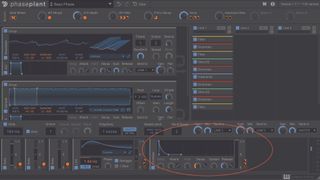
4. Filter it out
That said, even if you’re drawn to musical styles that regularly feature sine-wave basslines, it can be better to use a core sound that’s richer in frequency content and then use a low-pass filter to remove unwanted harmonics. Doing this means that you can automate filter changes as your track progresses. A sine wave contains no harmonics, so there’s nothing to filter.
5. Open the envelope
Once you’ve got your low-pass filter set to the right position, try using an envelope routed to the cutoff to open the sound very briefly as each new note is played. This provides extra articulation so that the listener will really be able to hear where each bass note plays. The best settings to use when doing this are short attack and decay times, and no sustain.
6. Attack, attack, attack!
Getting your amplifier envelope settings right is crucial. If you’re emulating an electric bass, for example, go for a fast attack, long decay, no sustain and a fairly fast release. You can make your own choices when you’re creating a synthetic tone but, as a general rule, nearly all basslines need fast attack times. A bass that sounds like it’s coming in late is not good.
7. Get clean
Sampling basslines from existing tracks is common practice, but it can sometimes be difficult to capture a clean groove that doesn’t feature any other parts. Try using a low-pass filter to get rid of the high-frequency sounds, leaving you with just the bottom end.
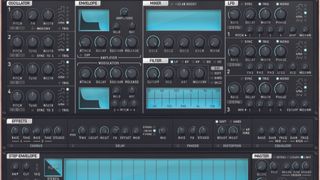
8. The art of noise
See that noise generator on your favourite bass synth? As the name suggests, it’s not there to keep quiet; try mixing a bit of white or pink noise in with your main bass sound to keep the interest levels up. This doesn’t have to be there all the way through, but it can make a nice addition during an alternate section such as a bridge or breakdown.
9. Make it in mono
It’s usually better to create your basslines in mono rather than stereo, so that they come from a fixed, narrow source. It might sound dull, but panning centrally is generally advisable, too. If you are working with a stereo synth preset, look carefully at the internal effects it uses and turn off the ones that add stereo width – unless width is something you’re actively going for.
10. Automated pump
Do you want to get a pumping bassline without the bother of sidechaining a compressor? The quick and dirty way to do it is to automate the gain of your bassline so that it rises and falls rhythmically, though it should be said that this technique might not give such smooth results as doing the job properly would.
11. Sound design time
Perfecting your bass sound can be an engrossing process, but it can become frustrating if you’re trying to do it in a session when you’re also working on the composition of your bassline. Make sure you set aside dedicated time to get into the finer details of your bass tone.
Programming bass
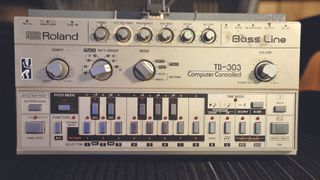
12. Play it not so straight
Quantise can be very useful for tidying up recordings or locking a bassline to the grid, but don’t be a slave to it. Some basslines will benefit from being left ‘as is’, while others are better ‘creatively quantised’ using the groove template features of your DAW. Don’t forget the good old swing function, either.
13. Slide away
For creating smooth basslines, with the pitch of one note sliding nicely into another, your synth’s portamento control (also known as glide) is your friend. Engaging it should give you the desired effect, and it can work wonders on electric, acoustic and synthesised basslines. Don’t feel like you have to use it throughout the whole track, though – it can have more impact when dropped in at opportune moments using automation.
14. Perfect pair
The relationship between your kick and bass will be instrumental in the success of most tracks, and it’s something that is really best nailed down early on in the production process of your song. This is because the combination is most likely going to be your track’s ‘engine room’, as it were, and getting it right will give you a solid base on which to build the rest of your tune.
15. hands on
There are loads of products on the market that enable you to add typical bass-playing ‘extra’ sounds (picks, string squeaks, scratches, etc) to your parts, but if you don’t have a suitable plugin, there’s nothing to stop you doing it manually instead. Layering up samples of such sounds on certain notes can be great for accenting them – simply place them on a new audio track and adjust the volume to taste.
16. Learn from the best
They say that imitation is the sincerest form of flattery, so if you have a bassline in mind that you want the one you’re working on to sound like, why not try emulating it first to get a feel for its groove and musical structure? Once you’ve done this, you might find that you can come up with the bassline you’ve been looking for just by moving a few notes around in your MIDI editor. Outright plagiarism is probably best avoided, though.
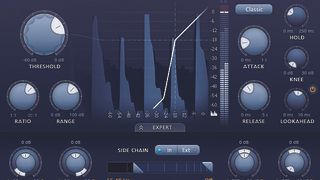
17. Double up
There may be occasions when you want your bassline to mimic another part of your arrangement exactly in order to emphasise it. In these cases, there’s no need to record the bassline from scratch: simply copy the MIDI data from the existing track to your bassline’s. You may need to drop it down an octave or two, but doing this should save you some time.
18. Pitch-perfect
Deep basslines are crucial to some genres, but it can be hard to hear if the one you’re creating actually fits with the rest of your track when it’s pitched down so low. If you’re wrestling with this problem, try pitching your bass patch up a few octaves to make sure you’re in the right key and on the right track.
19. Just dropped in
Similarly, you can actually go so far as to replace a few MIDI-triggered bass notes in a phrase with real ones from a recorded bassline. Chop them up and drop them in where they work best, but don’t forget to use short fades at the ends of these notes to avoid clicks.
20. Let’s gate it on
Don’t underestimate the usefulness of gating. Try applying a gate to an unruly bassline and feeding your kick drum channel into its sidechain input. This will ensure that your bass notes and kicks trigger simultaneously for a punchy, tight, clubby sound.
21. Hear the harmonies
Your bassline will often follow the root notes of the chords being played by other instruments, but experimenting with other notes can have real benefits. The whole flavour of a song can be transformed if you change the bass notes to others that harmonise with your chords.
Arranging and mixing bass
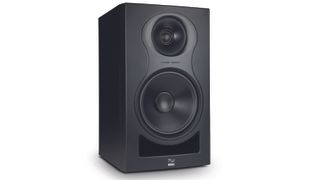
22. Delayed gratification
Many of the best basslines are practically hooks in themselves, but don’t feel like you always have to show off the Crown Jewels immediately. Sure, a bassline can be a great introduction to a track, but there’s a lot to be said for holding it back for a few bars to build anticipation, too. Also, try starting with a simplified version of the bassline and building up to the full groove gradually.
23. Filter fiddling
If you want to introduce a big bassline as part of a drop, one well-worn trick is to use a high-pass filter during the eight bars (for example) leading up to it. If you automate this so that the lower frequencies of the sound are introduced gradually, you’ll build anticipation and create a bigger impact when the full sound kicks in.
24. Keep changin’
Even if you think you’ve got the best bassline in the world, try to resist the temptation just to loop it across your entire track and leave it as it is. Subtle changes to note timings at certain points can have a greater impact than you might expect, and little flourishes at the end of every four- or eight-bar section (or just before a chorus, for example) can help to keep things interesting for the listener.
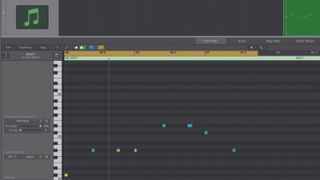
25. Sort out your speakers…
Everyone knows that a decent monitoring setup is crucial for fruitful mixing, but this is particularly true for basslines. You won’t really be able to hear what’s going on with your low-end frequencies if you don’t have a good set of speakers (or, at a push, some high-quality production headphones), so investing in some is highly recommended.
26. …And your sub
One other option is to add a sub-woofer to your setup. This will enable you to get a much better feel for how your bassline’s sub frequencies are working. If you can’t stretch to one of these, a spectrum analyser can give you a visual guide to what’s going on down there.
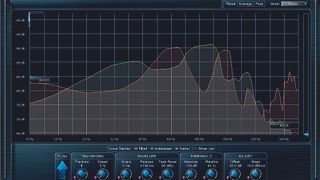
27. The clash
Although the bass guitar and kick drum can be best friends, their frequencies sometimes clash. If you’re having this problem, try notching out some of the kick frequencies from the bass part. A spectrum analyser can help you to find these (try starting your search around 90Hz). Once you’ve located them, use a narrow Q to pull a few dB from the bass.
28. Get on the buss
As we’ve mentioned elsewhere, it’s common practice to create a bassline using multiple layers. When the time comes to start mixing, it can be very useful to route these layers to a single buss so that you can apply processing to them together while also retaining the ability to tweak each layer individually.
29. Fill it up…
Is your bassline lacking fullness? Try sweeping a bell-shaped EQ boost between around 500Hz down to 150Hz. A broad boost of just a few dB can often be enough to provide the low-mid glue that’s required.
30. …Or empty it out
You might also find that your mix is sounding too full in this same range. In this situation, it might be the case that the frequencies of other instruments – pianos, guitars and synth pads, for example – are cramping your bass’s style, so each one will require individual attention in order to strip things back a bit.
Recording bass
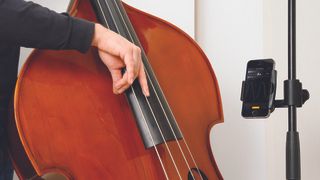
31. Tune up
It sounds obvious, but you’d be amazed at the number of recordings we hear that feature an out-of-tune bassline. There really is no excuse for it, particularly when your DAW will either have a built-in tuner or be capable of hosting a plugin that does the job.
32. Buzz off
That buzz you can hear on your bass recording might initially sound like it adds character, but it’ll quickly become annoying. If you’re getting noise in your signal when you record, try moving your bass player around, as the likes of monitors, lights, mobile phones and ground loops can all cause it.
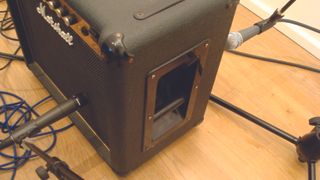
33. Same but different
It’s easy to assume that all bass guitars are born equal, but you’ll get a different type of sound depending on the instrument that you’re recording. Fender Precision and Rickenbacker 4000 series basses are favoured by rock acts, for example, while the likes of the Fender Jazz and Music Man StingRay tend to be used by pop and funk artists. So, if your player has several different guitars, make sure he or she uses the right one for the job.
34. Which way to play?
Similarly, there are several bass-playing techniques, each of which will give you a decidedly different kind of sound. Fingered bass is arguably the most versatile, providing a full, rounded tone, while picked bass has plenty of attack and cuts through the mix. And then, of course, there’s slap bass, which in the wrong hands can turn out very badly indeed.
35. Best of both worlds
People frequently ask if it’s better to record a clean DI’d output or an amplified one, but the truth is that it’s often better to use both signals. If possible, you should keep the two separate at the recording stage so that they can be mixed together later. An alternative option is to record just the DI signal, then feed it into an amp simulator that enables you to blend it with the processed sound, as some of them do.

36. Record everything
If your bass player is having a few practice runs prior to recording their part for real, why not try surreptitiously hitting the red button and getting these down as well? Some musicians can put too much pressure on themselves when they’re ‘going for one’, and you might find that the loose dummy run ends up sounding better than the ‘real’ recordings.
37. Mess with your mics
There are various accepted ways to record a bass amp, but if you want to get creative, try sticking a mic round the back of the amp as well. This can be used to capture a phase-inverted version of the front mic, and can lead to some very interesting sounds.
Computer Music magazine is the world’s best selling publication dedicated solely to making great music with your Mac or PC computer. Each issue it brings its lucky readers the best in cutting-edge tutorials, need-to-know, expert software reviews and even all the tools you actually need to make great music today, courtesy of our legendary CM Plugin Suite.

"If I wasn't recording albums every month, multiple albums, and I wasn't playing on everyone's songs, I wouldn't need any of this”: Travis Barker reveals his production tricks and gear in a new studio tour

“My management and agent have always tried to cover my back on the road”: Neil Young just axed premium gig tickets following advice from The Cure’s Robert Smith











